No one is happy about rising gas prices, and to make matters worse, up to 60 percent is wasted, lost as heat that pours out of the exhaust pipe. But what if some of that heat could be collected and converted back into electricity that can recharge the battery that powers the lights, wipers, power steering, or even the electric motor in a hybrid vehicle? The technology to do just that exists, but it's still a work in progress
Jun 9th, 2011
Read more
MIT researchers develop a device that combines a solar cell with a catalyst to split water molecules and generate energy.
Jun 9th, 2011
Read more
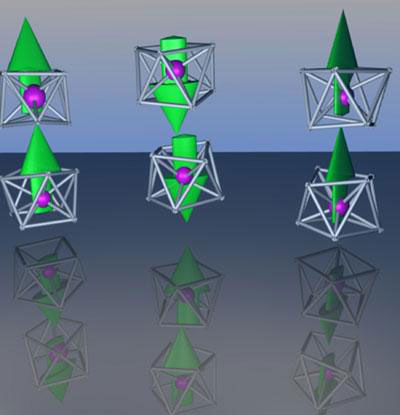 A team of Virginia Commonwealth University scientists has discovered a new class of 'superatoms' - a stable cluster of atoms that can mimic different elements of the periodic table - with unusual magnetic characteristics.
A team of Virginia Commonwealth University scientists has discovered a new class of 'superatoms' - a stable cluster of atoms that can mimic different elements of the periodic table - with unusual magnetic characteristics.
Jun 8th, 2011
Read more
Bone is one of nature's surprising "building materials." Pound-for-pound it's stronger than steel, tough yet resilient. Scientists at the U.S. Department of Energy's Ames Laboratory have identified the composition that gives bone its outstanding properties and the important role citrate plays, work that may help science better understand and treat or prevent bone diseases such as osteoporosis.
Jun 8th, 2011
Read more
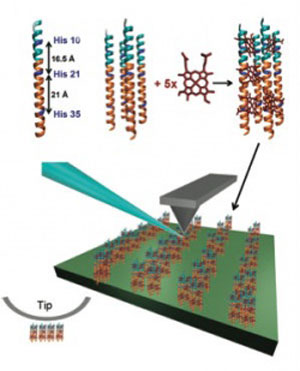 Electrical engineers have long been toying with the idea of designing biological molecules that can be directly integrated into electronic circuits. University of Pennsylvania researchers have developed a way to form these structures so they can operate in open-air environments, and, more important, have developed a new microscope technique that can measure the electrical properties of these and similar devices.
Electrical engineers have long been toying with the idea of designing biological molecules that can be directly integrated into electronic circuits. University of Pennsylvania researchers have developed a way to form these structures so they can operate in open-air environments, and, more important, have developed a new microscope technique that can measure the electrical properties of these and similar devices.
Jun 8th, 2011
Read more
Air and water meet over most of the earth's surface, but exactly where one ends and the other begins turns out to be a surprisingly subtle question. A new study in Nature narrows the boundary to just one quarter of water molecules in the uppermost layer - those that happen to have one hydrogen atom in water and the other vibrating freely above.
Jun 8th, 2011
Read more
Twenty-four exceptional undergraduate students will spend the summer exploring the emerging science of nanotechnology after being selected to participate in the prestigious Summer Internship Program at the College of Nanoscale Science and Engineering (CNSE) of the University at Albany.
Jun 8th, 2011
Read more
For millions of people hearing disorders make a negative impact on their lives. Scientists are looking into new ways of treating hearing disorders, by using different sorts of nanoparticles as original inner ear delivery devices. Their hope is that nanoparticles will be able to deliver drugs that can improve or restore hearing.
Jun 8th, 2011
Read more
A barely visible, electric-field-controlled droplet moves on an appropriately prepared surface, harvesting viruses, bacteria and protein molecules deposited thereon. This is how a novel method of collecting bioparticles looks like in real life. The method has been for the first time successfully tested.
Jun 8th, 2011
Read more
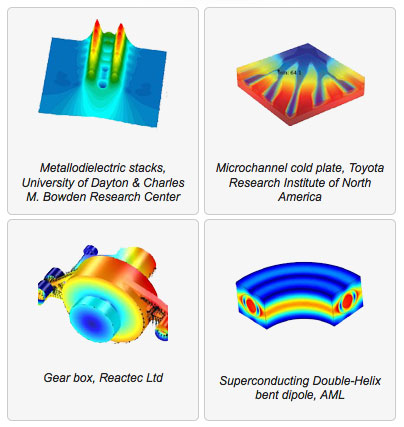 The all-new Worldwide Edition of the COMSOL Conference CD 2011 is now available. This compilation features over 500 technical papers, presentations and animations presented by engineers, researchers and scientists from around the globe.
The all-new Worldwide Edition of the COMSOL Conference CD 2011 is now available. This compilation features over 500 technical papers, presentations and animations presented by engineers, researchers and scientists from around the globe.
Jun 8th, 2011
Read more
Researchers at AIST have developed a method for separating and collecting semiconducting single-wall carbon nanotube (SWCNT) species with different carbon atom arrangements by simply pouring the dispersion of SWCNTs into multi-stage gel columns.
Jun 8th, 2011
Read more
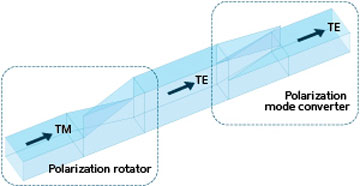 Silicon is the dominant material for the fabrication of integrated circuits and is also becoming a popular material for making photonics circuits - miniaturized circuits that use light instead of electronic signals for processing information. One of the challenges in the field, however, has been silicon's intrinsic sensitivity to the polarization of light, which can limit the rate of information transmission. Jing Zhang, Tsung-Yang Liow and co-workers at the A*STAR Institute of Microelectronics have now developed a novel solution to this problem.
Silicon is the dominant material for the fabrication of integrated circuits and is also becoming a popular material for making photonics circuits - miniaturized circuits that use light instead of electronic signals for processing information. One of the challenges in the field, however, has been silicon's intrinsic sensitivity to the polarization of light, which can limit the rate of information transmission. Jing Zhang, Tsung-Yang Liow and co-workers at the A*STAR Institute of Microelectronics have now developed a novel solution to this problem.
Jun 8th, 2011
Read more
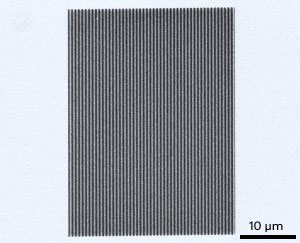 Periodic structures in organic light-emitters can efficiently enhance and replenish surface plasmon waves.
Periodic structures in organic light-emitters can efficiently enhance and replenish surface plasmon waves.
Jun 8th, 2011
Read more
Das oesterreichische Bundesministerium fuer Arbeit, Soziales und Konsumentenschutz hat einen Leitfaden fuer das Risikomanagement beim Umgang mit Nanomaterialien am Arbeitsplatz veroeffentlicht.
Jun 8th, 2011
Read more
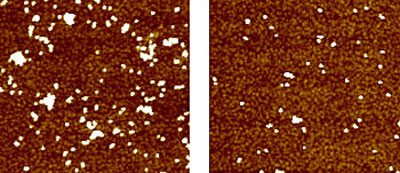 Depending on whom you ask, nanoparticles are, potentially, either one of the most promising or the most perilous creations of science. These tiny objects can deliver drugs efficiently and enhance the properties of many materials, but what if they also are hazardous to your health in some way? Now, scientists at the National Institute of Standards and Technology (NIST) have found a way to manipulate nanoparticles so that questions like this can be answered.
Depending on whom you ask, nanoparticles are, potentially, either one of the most promising or the most perilous creations of science. These tiny objects can deliver drugs efficiently and enhance the properties of many materials, but what if they also are hazardous to your health in some way? Now, scientists at the National Institute of Standards and Technology (NIST) have found a way to manipulate nanoparticles so that questions like this can be answered.
Jun 8th, 2011
Read more
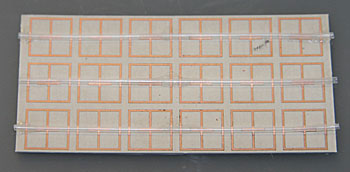 Like an opera singer hitting a note that shatters a glass, a signal at a particular resonant frequency can concentrate energy in a material and change its properties. And as with 18th century "musical glasses," adding a little water can change the critical pitch. Echoing both phenomena, researchers at the National Institute of Standards and Technology (NIST) have demonstrated a unique fluid-tuned 'metasurface', a concept that may be useful in biomedical sensors and microwave-assisted chemistry.
Like an opera singer hitting a note that shatters a glass, a signal at a particular resonant frequency can concentrate energy in a material and change its properties. And as with 18th century "musical glasses," adding a little water can change the critical pitch. Echoing both phenomena, researchers at the National Institute of Standards and Technology (NIST) have demonstrated a unique fluid-tuned 'metasurface', a concept that may be useful in biomedical sensors and microwave-assisted chemistry.
Jun 8th, 2011
Read more








 Subscribe to our Nanotechnology News feed
Subscribe to our Nanotechnology News feed